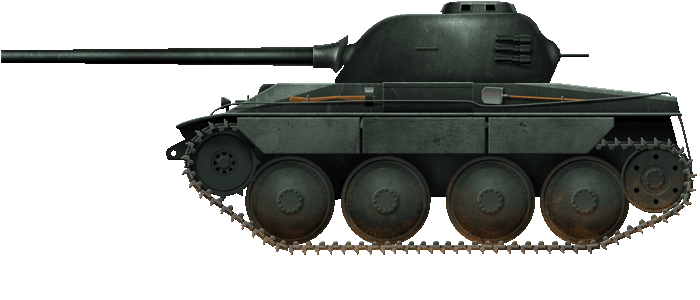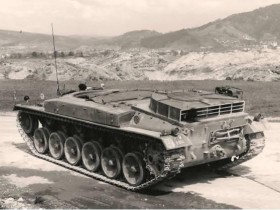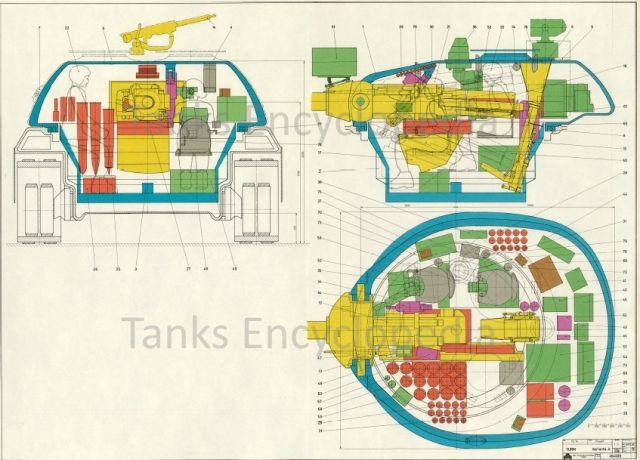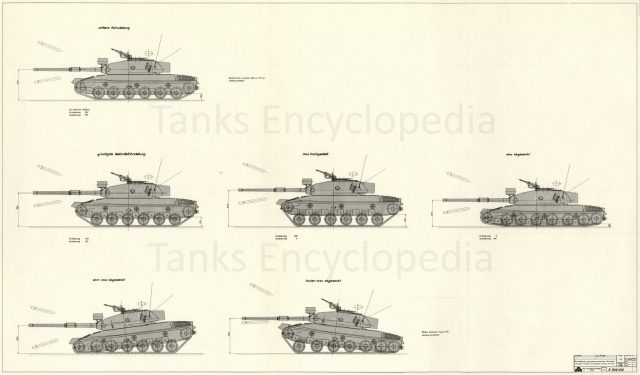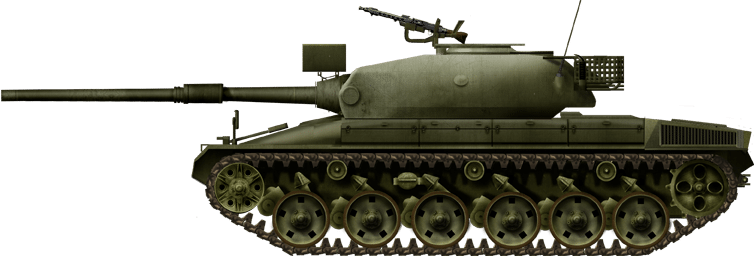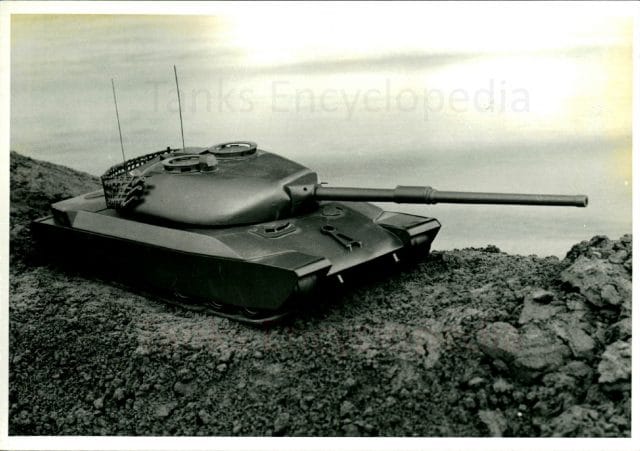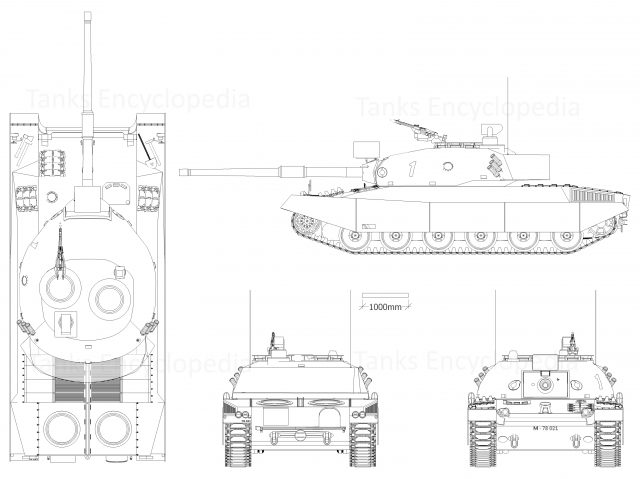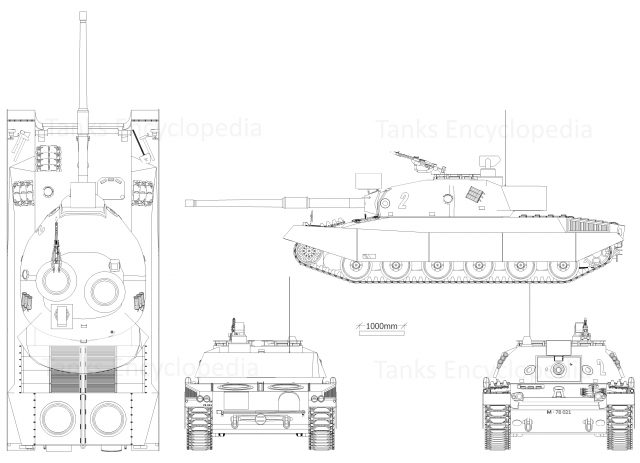 Switzerland (1950)
Switzerland (1950)
Light Tanks – Paper Projects
The Laupen tanks are two light tank projects which have been found at the Swiss National Archives, dating from 1950. These designs were meant to be able to defeat the Soviet IS-3 heavy tank which had shocked the western world in 1945, while still being light enough to be able to traverse the hilly landscape of Switzerland. At that time, the best tank the Swiss had was the Panzer 39, a version of the pre-war Panzer 38(t). This tank was clearly obsolete, and the Laupens were meant to replace it. Attempts to upgun the Panzer 39s were being made, fitting one tank with a new turret and a 4.7 cm gun, and later a tank destroyer variant was devised, fitted with a 7.5 cm L/42 gun. This vehicle is known as the Nahkampfkanone I.
Both attempts to upgun these tanks were cancelled and Switzerland ended up buying 158 G-13 tank destroyers. The G-13 was a modified Jagdpanzer 38(t), fitted with a new gun and several other small modifications. A reconstructed Jagdpanzer 38(t) had already been received from France and used for evaluation. However, the delivery of these vehicles from Czechoslovakia took time due to political issues.
On the original drawing from 1950 located in the Swiss national archives, these tanks were simply called ‘Panzer 14t’ and ‘Panzer 16t’ with a second document revealing the name of these projects, the ‘Laupen’ tanks. Why that name was chosen is unknown, however, there is a local community near Bern called ‘Laupen’, so there may have been a personal connection to that place from one member of the design team.
Laupen 16t
The Laupen 16t was based on the chassis of the G-13 tank destroyer. The suspension, tracks, transmission and many of the dimensions of the two vehicles are the same, including the chassis length, width and the ground clearance. The armor of the two vehicles is also highly similar, not only in shape, but also in thickness. Both vehicles have a 65 mm thick upper frontal plate, angled at 30 degrees, same thickness lower frontal plate at 49 degrees and 20 mm lower upper armor at 50 degrees. However, the middle part of the hull was widened in order to accommodate the new turret. The engine compartment was changed in order to fit a larger 220 hp diesel engine instead of the original 160 hp petrol engine normally mounted in the G-13.
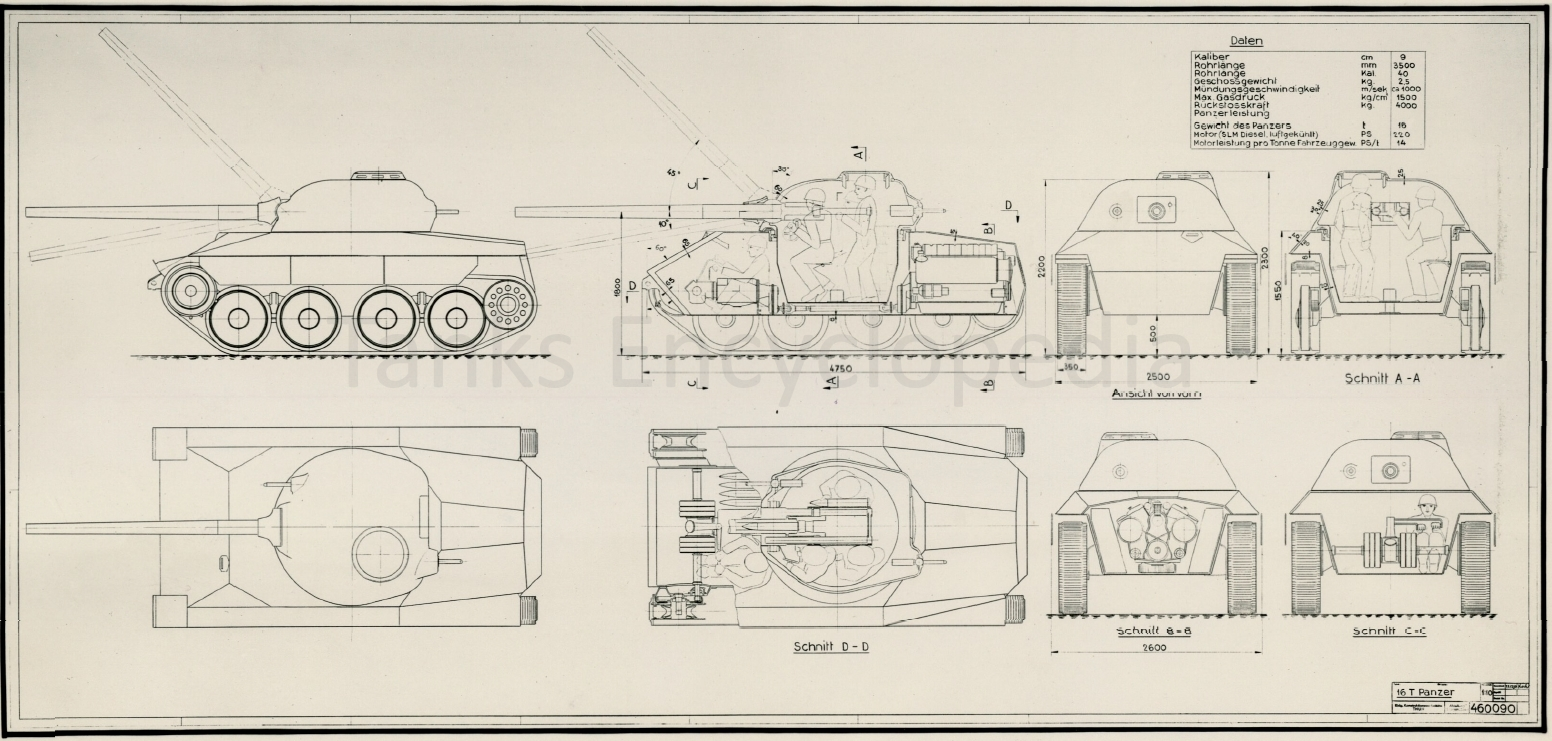
In addition to the above-mentioned documents, there was also a chart listing the Laupen 14t, Laupen 16t and the G-13 tank destroyer along with various technical data and a document that describes why there were 2 versions and why they were different.
Both the Laupens used the same middle-mounted turret. According to the drawings, it appears to be cast, with a curved shape. The gun was also shared between the two Laupens, with options for a 9 cm L/40 gun firing shaped charge ammunition (HEAT) or high explosive (HE). Sub-Caliber ammo (APCR) and fin-stabilized fragmentation grenades were also considered.
There were also plans to add a drum loaded autoloading mechanism with 6 shots per magazine. It was estimated that, with this system, the vehicle could achieve a rate of fire of 30 rounds per minute instead of the 20 rounds per minute which would be achieved if it was a hand loaded, single shot gun. At these rates however, the ammunition would soon be exhausted. Secondary armament consisted of 1 coaxial MG and one MG in the rear of the turret facing backwards.
The crew layout was also the same, with both having the driver on the front left side of the hull, the loader on the right-hand side and the gunner on the front left side of the turret. The commander was located behind the gunner on the left-hand side. A cupola with 8 vision slits was also placed at the rear-left of the turret, for the commander.his design would have likely been the cheaper option since the chassis was already available. It was however, heavier than the 14t version and as a result had a worse power to weight ratio and a higher ground pressure.
Laupen 14t
This was the lighter version of the two Laupens. Most probably it was a completely indigenous design, as it resembles no tank that Switzerland used or intended to use at the time. It was actually a larger vehicle than the 16-ton variant, but had thinner, better sloped armor. It was to be equipped with the same 220 hp diesel engine as on the Laupen 16t.
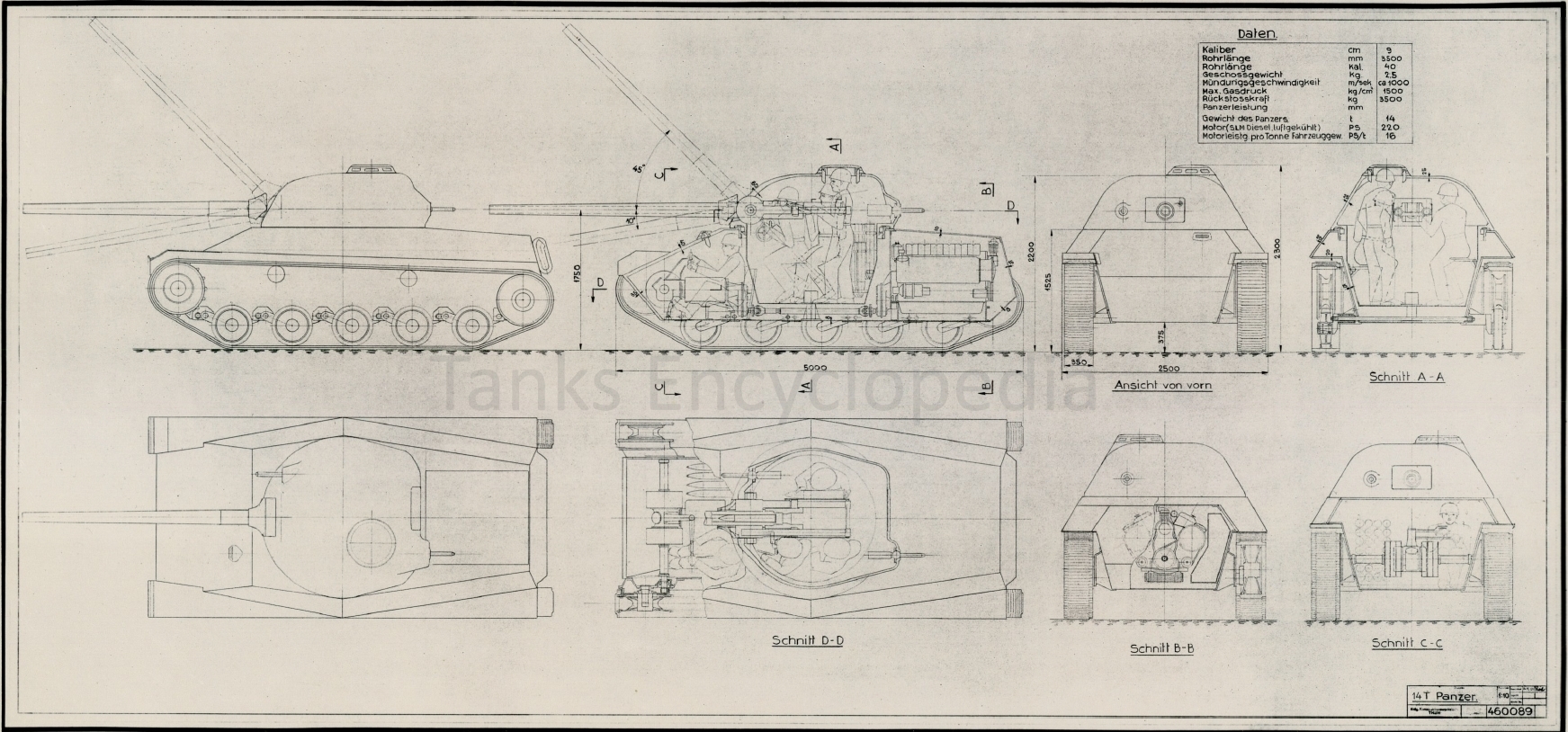
There were multiple differences between the Laupen 16t and the 14t, the main one being a different suspension. The Swiss closely followed the Swedish Lansen development and had a look at its suspension. Until that point the Swiss had mainly used tanks based on the Czech LTH tanks, with large road wheels and spring leaf suspension. The Lansen, however, had small road wheels with torsion bar suspension. This gave the Lansen a much smoother ride on rough terrain than the G-13 or any other tank with that suspension. It was also a much lighter suspension design. However, this meant that the Swiss needed to design a completely new track, since the G-13’s type track would have been used with the new suspension. The wheels of the torsion bar system moved a lot more vertically, and they needed a more flexible track in order to make the most of the advantages of the suspension. The new track and suspension would have removed another 1 ton of weight compared to the Laupen 16t.
Based on the plans of this tank, the suspension is a rather unusual torsion bar layout with the right-side arms face towards the front, while the left-side arms face to the rear. The reason behind this arrangement is unclear, however it may have been done in order to keep the tank as short as possible.
As mentioned above, the Laupen 14t used the same turret, gun and crew loadout as it’s bigger brother. There was a large difference for the crew compared to the Laupen 16t. Due to its suspension, the Laupen 14t’s floor would have been moved closer to the ground, giving it less ground clearance. This, combined with the fact that both tanks had the same height, would have meant that the Laupen 14t had a roomier interior compared to the Laupen 16t. The heavier version only had 1.65 meters of vertical space for the crew to stand in, which would have been uncomfortable for most soldiers.
Conclusion
One thing is known for sure. The Laupen projects never saw the light of day. While the exact reasons behind their cancellation have not yet been discovered, it may be speculated that it was due to monetary reasons.
Tanks are usually quite expensive, especially for a country with little natural resources and little experience in building such vehicles. Steel, for example, would have had to be imported.
Just as importantly, the AMX 13 was being developed in France. Simply buying this light tank from abroad would have arguably been less expensive than putting a tank industry up from scratch. In the end, the Swiss bought the AMX 13 and the G-13 remained in service as it was. The Laupens faded into history, quietly forgotten on a shelf in the archives.
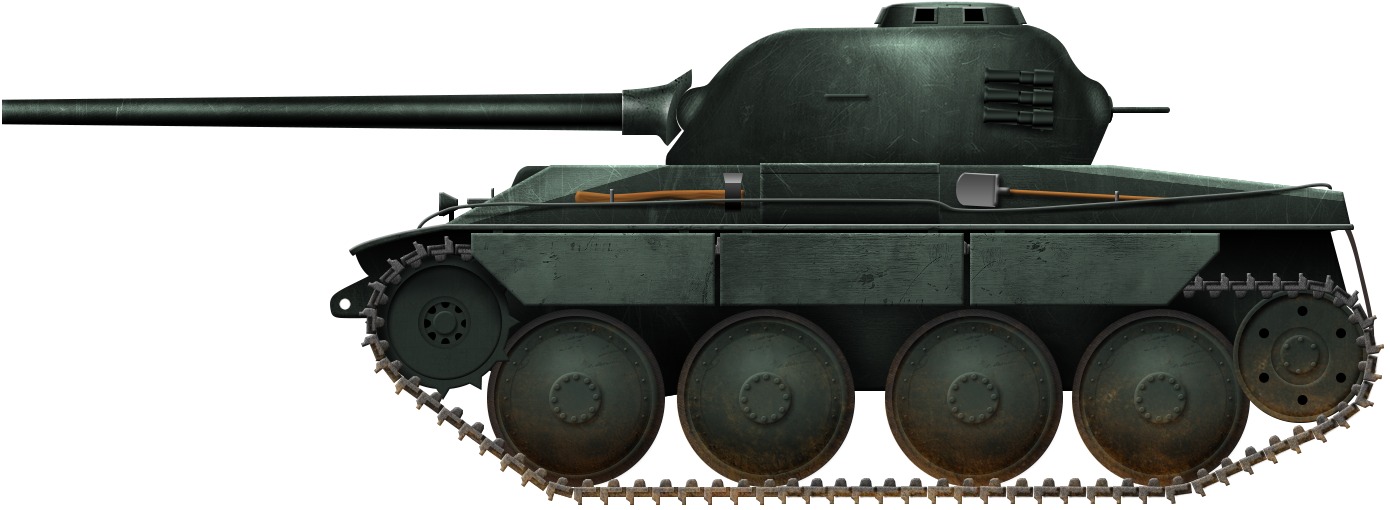
Illustration of the Laupen 16 tonne tank produced by Yuvnashva Sharma, funded by our Patreon Campaign.
Specs |
Laupen 16t |
Laupen 14t |
| Dimensions | 6.35 x 2.60 x 2.30 m (20’9” x 8’6” x 7’6” ft) |
6.60 x 2.50 x 2.30 m (21’7” x 8’2” x 7’6” ft) |
| Total weight | 16 tons | 14 tons |
| Crew | 4 (driver, loader, gunner, commander/radio) | 4 (driver, loader, gunner, commander/radio) |
| Propulsion | SLM Diesel, 220 hp (162 kW) , 14 hp/ton | SLM Diesel, 220 hp (162 kW) , 16 hp/ton |
| Suspension | Leaf Spring | Torsion Bar |
| Speed (estimated) | 40 km/h (25 mph) | 40 km/h (25 mph) |
| Armament | 9 cm L/40 7.5 mm coaxial 7.5 mm MG in the rear of the turret |
9 cm L/40 7.5 mm coaxial 7.5 mm MG in the rear of the turret |
| Armor | 65 mm (2.5 in) front 20-22 mm ( 0.78 – 0.86 in) side |
35-40 mm (1.37 – 1.57 in) front 15-20 mm ( 0.59 – 0.78 in) side |

